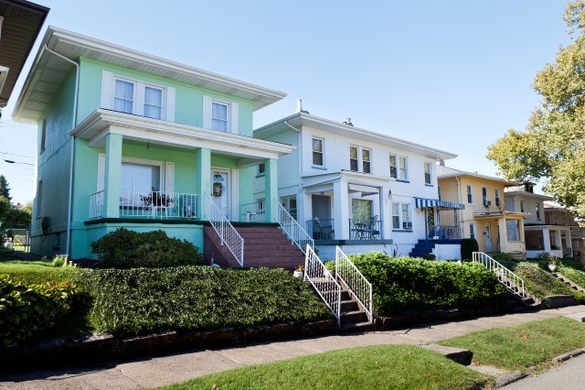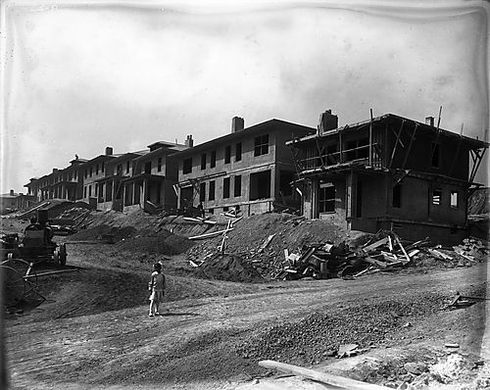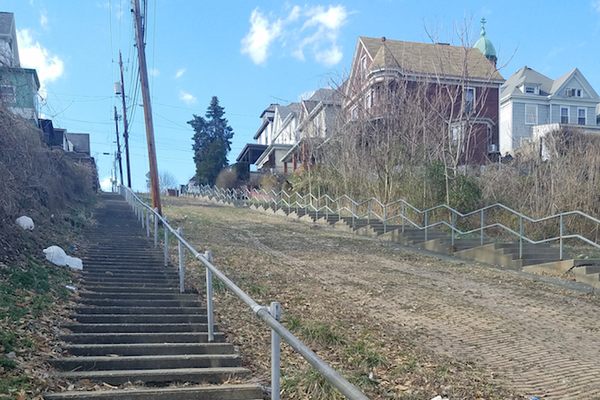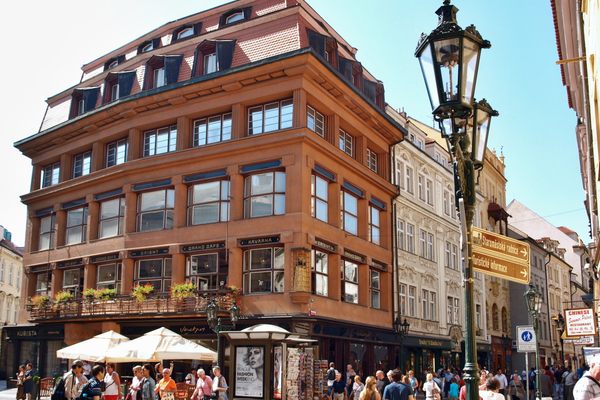Cement City
A neighborhood of houses made of poured cement through a process invented by Thomas Edison.
During World War I, the town of Donora, Pennsylvania, located about 30 miles south of Pittsburgh, roared with activity. The mills in Donora manufactured steel for all sorts of wartime materiel and zinc, used to galvanize the steel to prevent rust. The mills required a growing number of workers, and those workers needed houses to live in, an increasingly scarce commodity.
The Pittsburgh Post-Gazette wrote in 1915, the year the zinc factory was built, that “accommodations are proving entirely insufficient. Some of the 1,400 men have found lodging and boarding in Webster, across the river from Donora, and many are traveling to and from Charleroi, Monongahela, and other points. Some are even traveling daily from Pittsburgh out to their work. Donora real estate men are trying to cope with the situation.” Enter Thomas Edison.
Officials at the town’s steelmaker, American Steel & Wire (AS&W), heard that inexpensive houses were being made quickly in New Jersey by Edison, the so-called “Wizard of Menlo Park.” Edison had been working with various forms of Portland cement for several years and in 1899 had started the Edison Portland Cement Company. (Portland cement is a fine, granular material that, when mixed with water, binds sand and gravel or crushed stone into an amalgam that hardens over time. The inventor, Joseph Aspdin, thought the mix looked like the limestone beds on the Isle of Portland in southern England.)
Edison had devised a “reusable, more durable, 36-square-inch interlocking cast iron form, calling it a mold,” said Brian Charlton, a historian at the Donora Historical Society and Smog Museum. “Edison’s original plan called for a single monolithic pour, creating a unified and incredibly sturdy structure.” Each house design required one specific mold. The initial molds, though, cost $25,000 to make and took 30 men with a crane to install.
Adjustments in the molds and changes to the installation processes dropped the cost per mold to $12,000 and the number of men required to 10. AS&W ordered 80 homes to be built, 60 single-family homes and 20 duplexes. They were built on a hillside at the southern end of town, near the Stan Musial Bridge. “Edison’s panel forms made the site look like a giant Erector set,” said Charlton.
“From the time building commenced in August 1916 until the following August,” said Andy McPhee, author of a book about the Donora smog tragedy of 1948, “10,000 barrels of Portland cement would be used, weighing nearly 400,000 pounds. The cement would be mixed with 5,400 tons of sand and 6,500 tons of slag from Donora’s steel mills as the aggregate.” The project finished in November 1917.
The houses were rented first to middle managers at the steel and zinc plants. They could choose from eight Prairie-style home designs made famous by Frank Lloyd Wright. Prairie-style homes were often called Prairie boxes or American foursquares. Each house had a basement and a porch and came equipped with a coal furnace. AS&W also provided gardens, playgrounds, tennis courts, and baseball field and restricted their use to Cement City residents. Guards made sure of that. Kids who wanted to use the playgrounds had to be invited by someone in the community. Baseball legend Stan “The Man” Musial, who grew up in Donora, once said, “Cement City was where the rich kids lived.”
Cement City today stands as a historical landmark, a testament to the creativity and tenaciousness of the kinds of towns that built America.
Know Before You Go
For a more in-depth look at Donora and Cement City, visit the Donora Historical Society and Smog Museum at 595 McKean Avenue, Donora, Pennsylvania. You can also check out their informative website.
Plan Your Trip
The Atlas Obscura Podcast is Back!


















Follow us on Twitter to get the latest on the world's hidden wonders.
Like us on Facebook to get the latest on the world's hidden wonders.
Follow us on Twitter Like us on Facebook